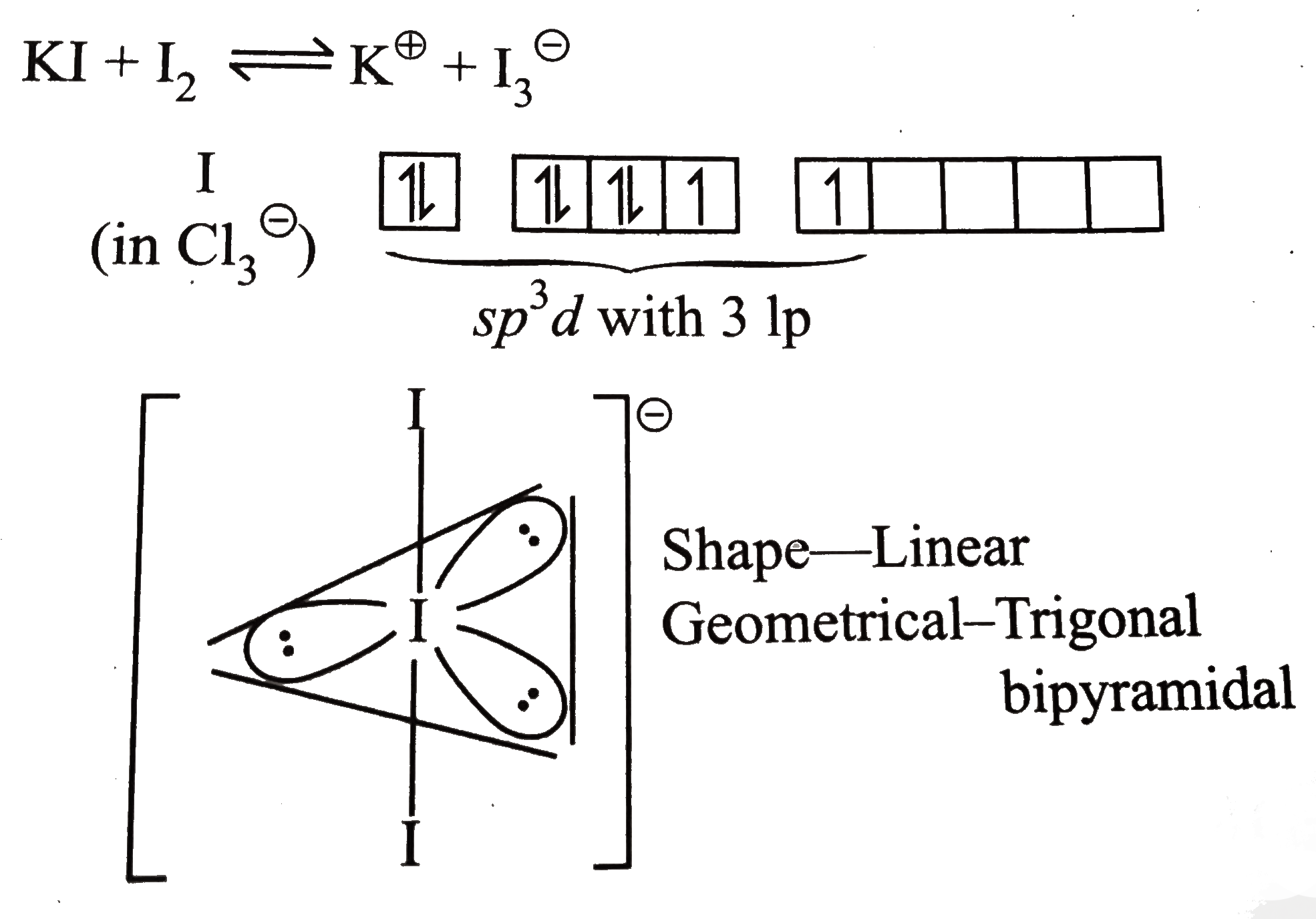I2 has less solubility in water and its solubility increase on adding KI solution. When KI and I2 react then a species 'X' is formed by which solubility of I2 increases.
Shape of anionic part of 'X' is
A
Linear
B
T shape
C
Pyramidal
D
See-saw
Video Solution
Text Solution
The correct Answer is:A
|
Topper's Solved these Questions
- P-BLOCK GROUP 17 ELEMENTS - THE HALOGEN FAMILYBook:CENGAGE CHEMISTRYChapter:P-BLOCK GROUP 17 ELEMENTS - THE HALOGEN FAMILYExercise:Exercises (Multiple Correct)
Explore 14 Videos
- P-BLOCK GROUP 17 ELEMENTS - THE HALOGEN FAMILYBook:CENGAGE CHEMISTRYChapter:P-BLOCK GROUP 17 ELEMENTS - THE HALOGEN FAMILYExercise:Exercises (Single Correct)
Explore 70 Videos
- P-BLOCK GROUP 17 ELEMENTS - THE HALOGEN FAMILYBook:CENGAGE CHEMISTRYChapter:P-BLOCK GROUP 17 ELEMENTS - THE HALOGEN FAMILYExercise:Exs 4.1 (Objective)
Explore 7 Videos
- P-BLOCK GROUP 16 ELEMENTS - THE OXYGEN FAMILYBook:CENGAGE CHEMISTRYChapter:P-BLOCK GROUP 16 ELEMENTS - THE OXYGEN FAMILYExercise:Archives Subjective
Explore 10 Videos
- P-BLOCK GROUP 18 ELEMENTS - THE INERT GASESBook:CENGAGE CHEMISTRYChapter:P-BLOCK GROUP 18 ELEMENTS - THE INERT GASESExercise:Ex 5.1 (Objective)
Explore 14 Videos
Similar Questions
Knowledge Check
I2 has less solubility in water and its solubility increase on adding KI solution. When KI and I2 react then a species 'X' is formed by which solubility of I2 increases.
Geometry of anionic part of X isATrigonal bipyramidalBSquare pyramidalCPentagonDLinerI2 has less solubility in water and its solubility increase on adding KI solution. When KI and I2 react then a species 'X' is formed by which solubility of I2 increases.
Hybridisation of anionic part of 'X' isAsp2Bsp3Csp3dDsp3d2I2 has less solubility in water and its solubility increase on adding KI solution. When KI and I2 react then a species 'X' is formed by which solubility of I2 increases.
Which of the following of the is the correct characteristic of anionic part of 'X' ?
[Polar and non-polar nature to be considered on the basis of dipole moment]
(I) Planar (II) non-planar (III) polar (IV) non-polarAI and IIBI and IVCII and IIIDII and IV


